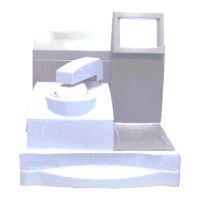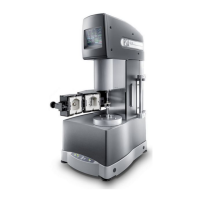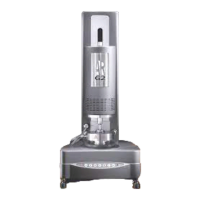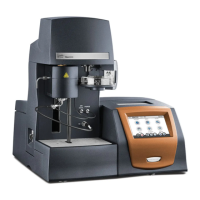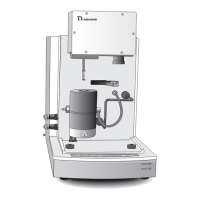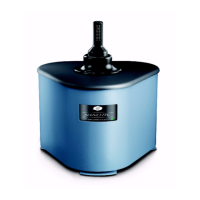DHR/AR Series SALS Accessory Getting Started Guide Page 10
Chapter 1:
Introducing the SALS Accessory
Overview
Small Angle Light Scattering (SALS) Accessory is a powerful tool for studying the properties of static and
sheared dispersions. A beam of laser light is trained on the sample and is scattered by interactions with the
electrons of objects within the sample. If the light is scattered through a small angle, the pattern formed can
be observed using a two-dimensional sensor such as a USB camera. From this pattern, called the scattering
pattern, information about the size, shape, orientation, and spatial distribution of the particles of the
dispersion can be inferred.
Figure 1 SALS Accessory.
The TA Instruments SALS Accessory is a Smart Swap™ system designed for use with the DHR-3, DHR-
3, and AR-G2/AR2000ex Rheometers. A patented, Peltier temperature-controlled lower plate, with sap-
phire window, allows the laser to be trained on the sample. The resultant scattered light is transmitted
through the upper transparent quartz geometry and is observed by a lens and camera assembly. The camera
images are stored with the data points and can be exported for additional treatment and analysis.
Scattering Theory
When electromagnetic radiation such as visible light encounters an object, interference between the radia-
tion and the electrons of the object occurs. The result is a change in the direction of the radiation. The
effect is most noticeable when the size of the object is similar in scale to the wavelength of the radiation, in
which case the effect is called diffraction, or scattering. The pattern produced by the scattered radiation can
be used to gain information on the size, shape, orientation and spatial distribution of the objects responsible
for the scattering. Many of the structures produced by surfactant molecules, for example vesicles and
wormlike micelles, have at least one dimension in the range that will scatter visible light, and the technique
is well suited to their study.
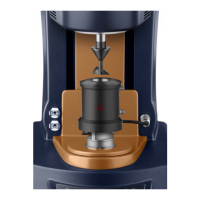
